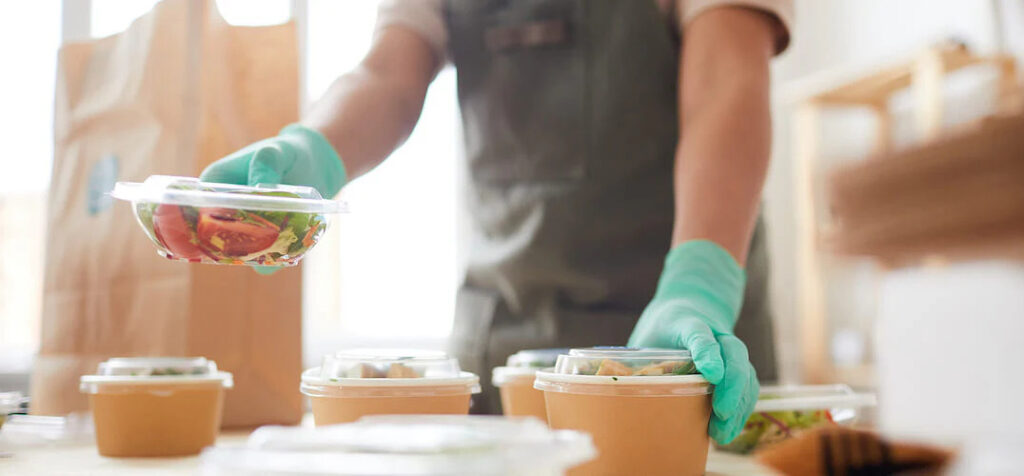Food delivery services have grown increasingly popular over the past several years. From quick lunch orders to elaborate dinner parties for family or friends, its convenience cannot be denied – yet behind the scenes there can be challenges associated with getting it there in perfect condition. One such challenge is food packaging for delivery; effective packaging not only ensures product integrity but can enhance the customer experience as well.
The Importance of Proper Packaging in Food Delivery
Proper food delivery packaging plays an integral role in maintaining its quality and safety for you and your delivery order. Quality packing ensures food remains uncontaminated during transit. Imagine something unexpectedly cold arrives with sauce dribbling out or pieces breaking free, causing dissatisfaction among diners and a lot of complaints.
Preventing Leakage and Spillage
One of the greatest challenges with food packaging is preventing leakage and spillage. Packaging not designed specifically to handle individual food types can lead to messy situations resulting from their mishandling; soup containers that aren’t leakproof could easily lead to disastrous spillages while improperly sealed boxes could let in sauces and dressings from their containers and become sources of ruinous leaks and spills.
Maintaining Temperature
Delivery of food at its intended temperature is another essential element. Hot items need to stay hot while cold food needs to remain cool – which requires packaging solutions with insulation capabilities that help achieve this balance. Quality thermal packaging solutions help your meal arrive exactly as intended on time at your doorstep!
Common Packaging Challenges in Food Delivery
While packaging for delivery remains essential to restaurants’ operations, they face multiple hurdles that complicate this task.
Lack of Standardization
One of the major hurdles restaurants must overcome is the lack of standardization in packaging practices. Without consistent solutions in place, restaurants may experience variations in food quality and delivery time due to different packaging materials or designs being utilized – leading to inconsistency when protecting or presenting food to guests. Standardizing packaging practices is vital in streamlining operations and increasing delivery efficiency.
Cost Constraints
Finding a balance between cost and quality when it comes to packaging presents another difficulty for restaurants. High-grade materials offer greater protection and presentation but often come at a premium. Restaurants must find ways of investing in high-quality packaging while managing costs effectively, striking an equilibrium by choosing cost-efficient solutions without compromising the quality. One approach would be opting for cost-efficient solutions without compromising the experience for guests.
Environmental Concerns
With consumers becoming more mindful of environmental sustainability, restaurants face growing pressure to adopt packaging practices that combine both practical and ecological considerations. Finding eco-friendly packaging that’s both effective and eco-friendly may prove challenging; many customers favor recyclable or compostable options in line with their commitment to environmental responsibility.
Solutions to Meet Packaging Challenges
Restaurants have various strategies available to them to overcome these hurdles and meet them head-on.
Investment in High-Quality Packaging Materials
Investment in high-grade packaging materials can have a substantial impact on product quality and customer experience, often outweighing any upfront costs involved in such purchases. Durable materials that prevent leakage, maintain temperature levels, and offer adequate protection can increase customer satisfaction while decreasing complaints significantly.
Customized Packaging Designs
Tailoring packaging designs to specific menu items is another helpful strategy to minimize waste and ensure food reaches customers in its prime condition. Containers with compartments may help separate sauces and sides for maximum effectiveness when shipping food orders directly.
Implementing Sustainable Practices
Adopting eco-friendly packaging solutions not only benefits the planet but can also boost the brand image of restaurants. Reusable, recyclable, and compostable packages satisfy consumer preferences for sustainability.
Technology’s Role in Enhancing Packaging Efficiency
Technology plays an increasingly vital role in improving packaging efficiency.
Smart Packaging Solutions
Intelligent packaging technologies like temperature indicators or tamper-evident seals offer additional layers of protection to guarantee food safety during transit and ensure its quality remains uncompromised. Such measures help keep meals intact during their journey to their destinations while giving peace of mind that no food quality issues were compromised during delivery.
Integrating Packaging with Delivery Systems
Integrating packaging into delivery systems can streamline operations and increase efficiency, as it reduces handling times while guaranteeing meals arrive promptly in good condition.
Conclusion
Addressing food delivery industry packaging challenges is integral for both customer satisfaction and operational effectiveness. By emphasizing efficient packaging solutions, restaurants can improve their practices to better fulfill operational demands while meeting customer demands simultaneously. Investment in high-grade materials, customizing designs to match operational needs, and adopting sustainable practices are all integral steps toward meeting this challenge.


